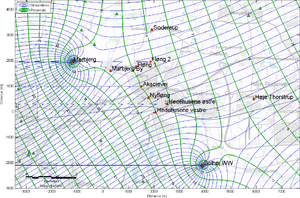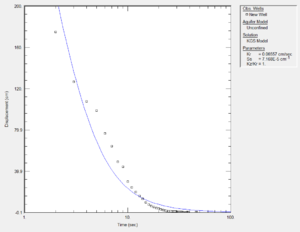Modeling tools
| Highlights |
|---|
|
ContentsModeling toolsThe following list shows some selected modeling tools that can be used for the simulation of fracture flow and transport. COMSOL MultiphysicsCOMSOL Multiphysics® is a comprehensive and flexible modeling suite that can be used to simulate various kinds of physics. It is well suited for computing flow and transport in limestone aquifers. It provides predefined physics-based interfaces (e.g. a module for subsurface flow) and allows equation-based modeling, where arbitrary partial differential equations can be solved. Different physics can be coupled, e.g., a flow model can be coupled with a transport model. The toolbox provides tools for geometry and mesh generation, a user interface for the simulation setup, several direct and indirectsolvers, and visualization and post-processing tools. It uses the finite-element method and includes higher-order discretization schemes. For the modeling of flow and transport in porous media, there are predefined physics interface available. Fractures can be included as additional discrete features. Another option is to use the PDE interface of COMSOL. The flow and transport equations are implemented as partial differential equations and the fracture flow and transport can be added using a feature called "Weak contributions". Here is an instruction file which describes how to setup a 2-dimensional flow and transport model including fracture flow and transport in COMSOL Multiphysics using the PDE interface. FEFlowFEFlow is a finite-element simulator focused on groundwater flow and transport of contaminants, groundwater age and heat in porous media. It comprises mesh generators, solvers and post-processing tools for visualization and result evaluation. It facilitates the computation of porous medium flow and transport in 2D and 3D aquifers, which can be confined, semi-confined or unconfined. Unsaturated flow can also be modeled with based on the Richards model. (Hydro-)geologic data can be easily imported and discrete fractures can be included. TOUGHDuMuX
HydrogeospherePetrelFRACGEN and NFFLOWFRACMAN
Useful helpersBesides the comprehensive models, there are several small tools available that can be helpful when dealing with contaminant transport in limestone aquifers. Some of them will be described in the following. Capture zone delineation of extraction wells (Matlab model)Contaminated sites often pose a threat to drinking water wells. Christ and Goltz [1] have developed a semi-analytical algorithm that allows estimating the capture zones of extraction wells. Following parameters are required to set up and run the model:
The model computes streamlines and isopotential lines for the specified set of parameters. This tool can be very useful to get a quick estimate of well capture zones to check, for example, if a contaminant is likely to flow towards a drinking water well. It does, however, not consider fracture flow and is based on several simplifying assumptions. When a background map of the study area is specified, the streamlines and isopotential lines can be directly plotted on the map, as shown in the example below. A Matlab model was developed based on the solution from Christ and Goltz (2002) [1]. An example file for the larger Akacievej area can be seen here: The example including the background map shown above can be downloaded as zipfile here: Spreadsheet tool for fracture transport based on the semi-analytical solution from West (2004)Hydraulic parameters from aquifer tests using AqtesolvAqtesolv is an easy-to-use tool for the design and interpretation of aquifer tests like pumping tests and slug tests. It provides a variety of conventional solution methods for aquifer tests in confined, leaky and unconfined aquifers and several advanced methods, e.g. for fractured aquifers or oscillating water tables. A comprehensive description of the capabilities and a free demo version is available on the software's webpage. The software tool contains a comprehensive help menu that provides explanations of the different solution methods and the required parameters. Geologic modeling with GeoScene3DGeoScene3D is a tool to import and work with borehole data to create a geologic model. It is possible to directly import data from the Danish borehole database Jupiter and to interpolate borehole data, for example to obtain the surface of the top of the limestone.
|

